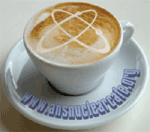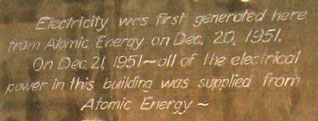For the majority of human history, people used their own muscles to provide almost all of the work required for survival and development. A thin slice of humanity achieved a moderate amount of personal comfort and leisure because they were able, often through an accident of birth, to control a portion of the daily work output of hundreds to thousands of their fellow humans. The only sources of work-in the engineering sense-that were not either human or animal muscle came from capturing falling water or intermittently by capturing the breezes through devices like cloth sails or wind mills.




 The Institute for National Strategic Studies-a component of the National Defense University-has published a new article examining the potential for using small modular nuclear reactors (SMRs) to address the U.S. Department of Defense's (DOD) dependence on civilian power grids. The article also looks at the potential for using SMRs in the field.
The Institute for National Strategic Studies-a component of the National Defense University-has published a new article examining the potential for using small modular nuclear reactors (SMRs) to address the U.S. Department of Defense's (DOD) dependence on civilian power grids. The article also looks at the potential for using SMRs in the field. I teach students of engineering. Many of them (although certainly not all) prefer logarithms to literature and algebra to anthropology. No doubt they get a fair share of that in my classes, but I try to include a bit of history whenever I can.
I teach students of engineering. Many of them (although certainly not all) prefer logarithms to literature and algebra to anthropology. No doubt they get a fair share of that in my classes, but I try to include a bit of history whenever I can. The 39th Carnival of Nuclear Energy Blogs is up at
The 39th Carnival of Nuclear Energy Blogs is up at  Don't miss a post! The ANS Nuclear Cafe includes ANS member perspectives on a range of timely nuclear topics and activities. Subscribe by entering your email address in menu to the right under ANS Nuclear Cafe Email Subscription Service.
Don't miss a post! The ANS Nuclear Cafe includes ANS member perspectives on a range of timely nuclear topics and activities. Subscribe by entering your email address in menu to the right under ANS Nuclear Cafe Email Subscription Service.


 Happy
Happy